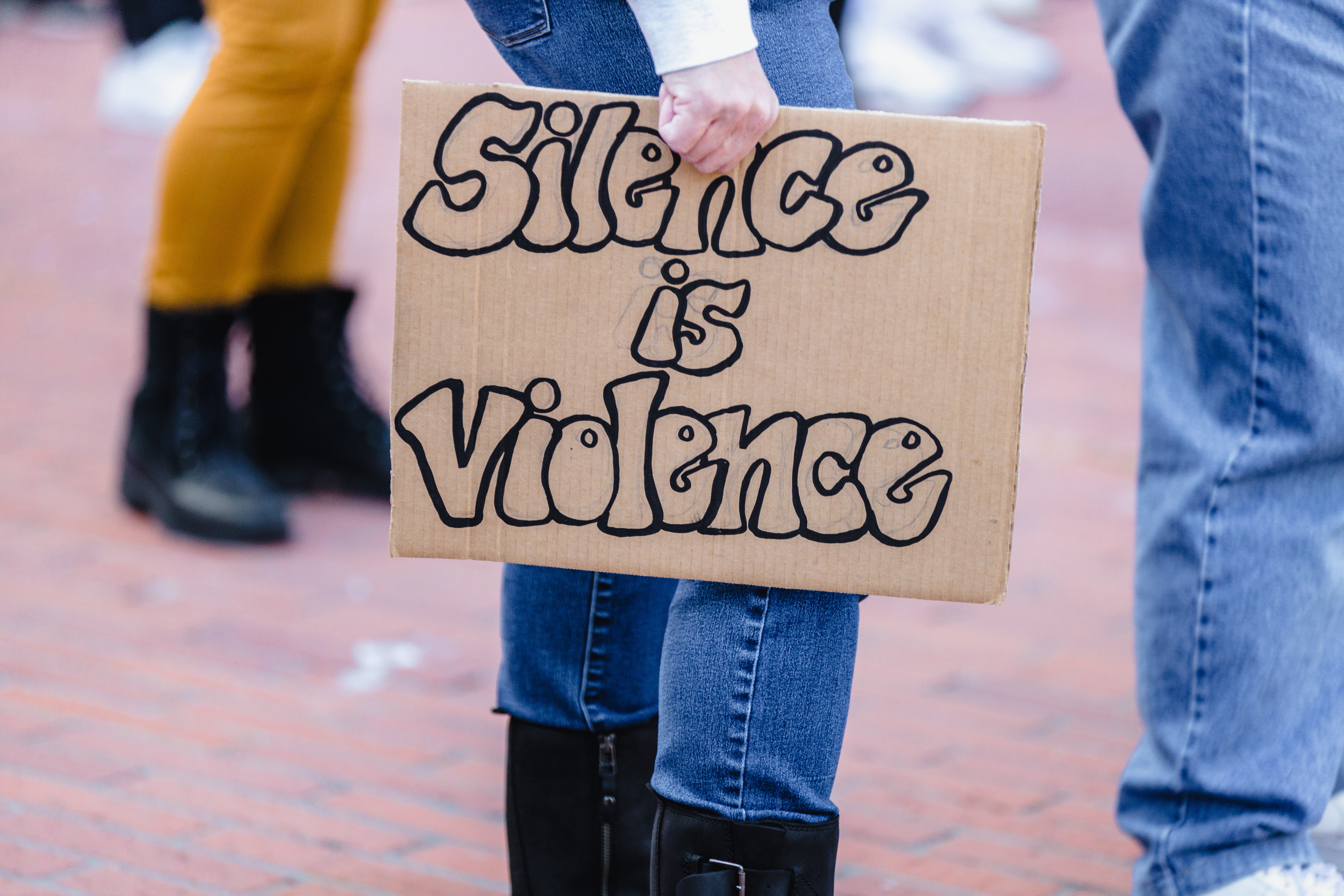What is the definition of domestic violence?
Domestic
violence is a systematic strategy of instilling fear and subservience
in a person in a domestic setting, such as a household. The motivation
for this violence can range from the need to maintain an individual's
power structure over another to the desire to instill/coerce another for
self-gratification. Domestic violence in India primarily refers to
violence perpetrated by biological relations against an individual,
however it also includes abuse perpetrated against women by male family
members or cousins.
photo by Jason Leung on Unsplash
The Protection of Women from Domestic Violence Act of 2005 defines domestic violence. Prior to the Domestic Violence Act, domestic violence cases in India were controlled by Section 498-A of the Indian Penal Code. There are two flaws with Section 498-A. The first is that there is no provision in this article that provides relief or compensation to the sufferer. Second, only married women were covered by section 498-A. The Centre enacted the Domestic Violence Act of 2005 to address these flaws. The Domestic Violence Act provides remedies in the form of refuge, medical facilities, a protective order, and a compensation order, among other things.
What does domestic violence against women entail?
Domestic violence is defined as assaulting or injuring a woman in a domestic relationship, according to the Domestic Violence Act. It encompasses all forms of abuse, including physical, sexual, verbal, emotional, and financial. The Domestic Violence Act prohibits not only actual but also threatened domestic violence. Harassment of a woman or her relatives as a result of unlawful dowry demands is also covered by the Domestic Violence Act's definition. The Domestic Abuse Act is designed to protect wives and female live-in partners from domestic violence perpetrated by their husbands or male live-in partners, including his family. Any woman who is, or has been, in a domestic relationship with the perpetrator and alleges to have been subjected to any act of domestic violence is defined as a "aggrieved person" under Section 2(a) of the DOMESTIC VIOLENCE ACT(1). The Domestic Violence Act protects women who are or have been in a relationship with the abuser, as well as those who have shared a household with the abuser and are related by consanguinity, marriage, or a tie in the nature of marriage or adoption, such as mothers, sisters, or widows.
Domestic Violence Against Women: What Are the Different Types?
Domestic violence against women can take many forms, including physical, sexual, verbal, and emotional abuse, as well as financial abuse.
Physical abuse: The most apparent type of domestic violence against women is physical assault. The Domestic Violence Act defines domestic violence as any act that causes bodily harm or puts the victim's life, limb, health, or development in jeopardy. Physical abuse includes assault, unlawful force, and criminal intimidation.
Sexual abuse : Sexual abuse is a form of sexual/reproductive compulsion that is directed at women. In general, marital rape should be considered a form of sexual abuse. Marital rape, on the other hand, is not prohibited unless the wife is under the age of 15. Sexual abuse is defined as any sexual abuse that "abuses, humiliates, degrades, or otherwise violates the dignity of a woman," according to the Domestic Violence Act.
Verbal and emotional abuse: During domestic violence against women, verbal abuse comprises remarks/threats made by domestic relations. From a human rights standpoint, verbal abuse leads to emotional abuse, which is an extremely widespread type of domestic violence. Psychological abuse results from a woman's sense of self-worth being eroded by a combination of verbal and emotional assault.
Economic abuse: The government took a bold step by include economic abuse among the types of abuse covered under the Domestic Violence Act. Economic abuse is defined as denying or threatening to deny the victim and her children access to financial resources or assets.
Causes of Domestic Violence in India
Domestic abuse is caused by a variety of factors. There is no one-size-fits-all solution. Domestic violence against women is caused by a complex combination of sociological/behavioral, historical, religious, and cultural causes.
Factors of Sociology and Behavior: Anger issues/aggressive attitude, poverty/economic hardship, difference in status, controlling/dominating character, drug addiction, upbringing, and psychological instability (bipolarism, depression, stress, etc.) are among the sociological, behavioral, and cultural aspects.
Historical Considerations: Historical factors may be traced back to patriarchy's inherent evil and superiority complex, which has existed among men for ages.
Religious Factors: Religious sanctifications indicate a subtle type of female dominance, if not outright dominance. Domestic violence against women is also increased as a result of this.
Desire for a male child is one of the cultural factors that leads to domestic violence. Domestic violence against women is perpetrated as a result of this fixation, which stems from a lack of knowledge and inherent masculine superiority. This is not an all-inclusive list of elements and motivations for domestic violence may vary.
Dowry is an example of a socio-cultural element. However, because of the high number of domestic violence instances originating from dowry demand that is illegal, it is necessary to highlight it individually. This was also recognized by Parliament, since dowry-related domestic violence has been designated as a distinct category within the Domestic Violence Act's scope of abuse resulting in domestic violence.


 Create and manage your profile
Create and manage your profile Refer an author and get bonus Learn more
Refer an author and get bonus Learn more Publish any lost and found belongings
Publish any lost and found belongings Connect with the authors & add your review comments
Connect with the authors & add your review comments Join us for Free to advertise for your business or
Contact-us for more details
Join us for Free to advertise for your business or
Contact-us for more details
 Join us for Free to publish your own blogs, articles or tutorials and get your
Benefits
Join us for Free to publish your own blogs, articles or tutorials and get your
Benefits

 1 like
1 like


